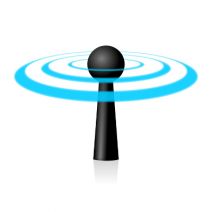SMART Blog
Time to Go Mobile: 3 Mobile Device Tethering Options
 Mobile WiFi is an imperative part of how you get things done while you’re out and about, but did you know that you can use your mobile device as a hotspot? This is one of the many features that modern smartphones come equipped with that are designed to help you remain as productive as possible. There are three ways of tethering your device to your smartphone to take advantage of a mobile WiFi hotspot, but which one is the most efficient?
Mobile WiFi is an imperative part of how you get things done while you’re out and about, but did you know that you can use your mobile device as a hotspot? This is one of the many features that modern smartphones come equipped with that are designed to help you remain as productive as possible. There are three ways of tethering your device to your smartphone to take advantage of a mobile WiFi hotspot, but which one is the most efficient?
Tethering with Mobile WiFi
Advantages
By using your smartphone to broadcast a wireless signal, you can easily connect your device using your new mobile hotspot. Also, depending on the quality of your phone’s reception, your device can emit a wireless signal that’s on par with those produced from an actual wireless router. In fact, most smartphone hotspots are able to connect up to five different devices, adding to the versatility of the feature.
Disadvantages
The biggest concern when using your smartphone as a mobile hotspot is security. Your phone’s signal is vulnerable to hackers within range. This means that you should take the same precautions with your mobile device that you would with your office’s in-house router. Another disadvantage is that your device’s battery can get drained pretty quickly when using your device for tethering, which might leave you tethered to an outlet instead of WiFi.
Tethering with USB Cables
Advantages
When tethering with USB, you don’t need to worry about your battery life. Your phone receives a charge while it’s plugged into your device, meaning that you’ll only have to worry about one battery instead of two. Plus, when you use your USB cable for tethering, the WiFi signal is only pushed through the cable. This means that the only device using it is yours.
Disadvantages
Adding one more cable to what you already carry around with you might not feel like a significant addition, but it can be a minor inconvenience. The same can be said for keeping your device by your side, which can be distracting. USB tethering often requires special software or configurations, depending on the device being used. This simply means there are more steps to go through, which can be irritating. Still, despite these minor disadvantages, tethering via a USB cable is probably worth it when possible.
Tethering via Bluetooth
Advantages
Bluetooth, just like WiFi, is capable of using a wireless signal to provide your device with an Internet signal. Bluetooth is specifically designed to use up less battery power, so it’s perfect for use with a mobile hotspot. Additionally, Bluetooth isn’t nearly as common as a mobile hotspot as wireless, so it has better security.
Disadvantages
The disadvantage to Bluetooth is that it’s not as easy to configure as WiFi. According to Pocketnow:
It’s a little more involved to set up than WiFi, and a little more involved every time you want to use Bluetooth tethering. If power consumption is a concern, Bluetooth is probably the way to go, if you’re willing to configure it.
So which tethering option is the best? It really depends on your needs. If you’re not entirely sure how to tether your device, or need help deciding which method is best for you, give us a call at 586 258-0650 .
Comments



